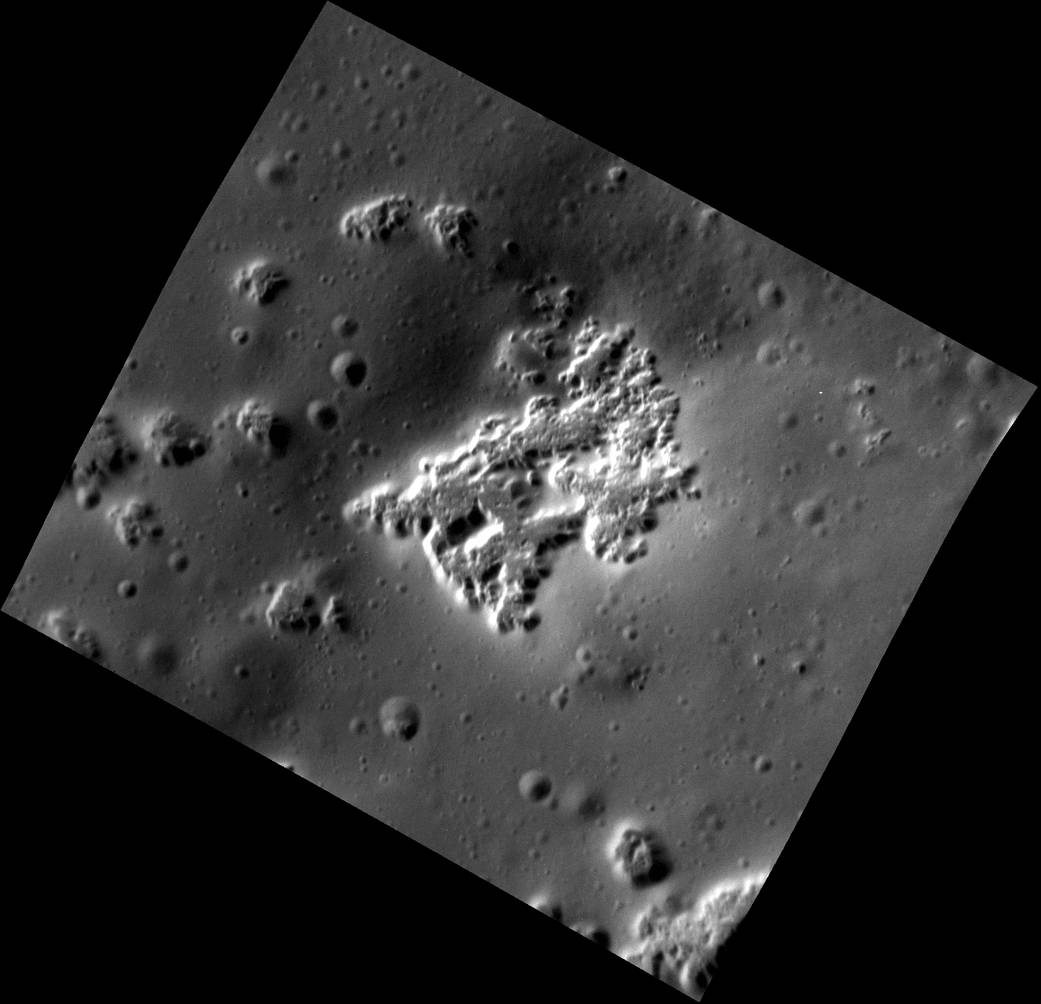Date acquired: August 31, 2014Image Mission Elapsed Time (MET): 51805374Image ID: 6975018Instrument: Narrow Angle Camera (NAC) of the Mercury Dual Imaging System (MDIS)Center Latitude: 39.90°Center Longitude: 258.2° EResolution: 3.8 meters/pixelScale: The image is about 3.8 by 4.5 km (2.3 by 2.8 mi.).Incidence Angle: 60.3°Emission Angle: 29.6°Phase Angle: 89.9°Of Interest: This high-resolution view shows hollows on the southwestern peak ring of the Scarlatti basin. The hollows are the irregularly shaped, flat-floored depressions. The image is striking because it shows that there are abundant small impact craters on the surface surrounding the hollows. But there are few if any within the hollows themselves. Since impacts occur randomly over Mercury’s surface and accumulate with time, the lack of craters on the hollows indicates that they must be very young relative to the rest of Mercury’s surface. This image was presented at a press conference at the Lunar and Planetary Science Conference, March 16, 2015. This image was acquired as a high-resolution targeted observation. Targeted observations are images of a small area on Mercury’s surface at resolutions much higher than the 200-meter/pixel morphology base map. It is not possible to cover all of Mercury’s surface at this high resolution, but typically several areas of high scientific interest are imaged in this mode each week. The MESSENGER spacecraft is the first ever to orbit the planet Mercury, and the spacecraft’s seven scientific instruments and radio science investigation are unraveling the history and evolution of the Solar System’s innermost planet. In the mission’s more than three years of orbital operations, MESSENGER has acquired over 250,000 images and extensive other data sets. MESSENGER is capable of continuing orbital operations until early 2015.
Credit: NASA/Johns Hopkins University Applied Physics Laboratory/Carnegie Institution of Washington
2 min read



























